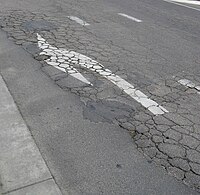
Photo from wikipedia
Failure prediction and maintenance decision-making are two core activities in a prognostics and health management (PHM) system. However, they are often studied independently and hierarchically. The main goal of this… Click to show full abstract
Failure prediction and maintenance decision-making are two core activities in a prognostics and health management (PHM) system. However, they are often studied independently and hierarchically. The main goal of this article is to combine system failure prediction with maintenance decision-making to develop a predictive maintenance strategy. System failure prediction is achieved by constructing an ensemble model of deep autoencoder (DAE), long short-term memory (LSTM), quantile regression (QR), and kernel density estimation (KDE), namely DAE-LSTMQR-KDE. Then, based on the probability density of system failure time obtained from the ensemble model, a replacement cost function (RCF) and an ordering cost function (OCF) are proposed to support maintenance and inventory decisions. Finally, optimal decisions are determined by minimizing the two cost functions. A score equal to 246.59 and a coverage width-based criterion (CWC) index equal to 0.35 were obtained when the DAE-LSTMQR-KDE ensemble model was applied to the C-MAPSS dataset, while the average maintenance cost rate (MCR) of the proposed maintenance strategy was 0.74. The results demonstrated that the proposed prediction and maintenance method outperforms several state-of-the-art methods. In addition, different cost structure scenarios are also investigated to illustrate the flexibility of maintenance decisions based on failure prediction information.
Journal Title: IEEE Transactions on Instrumentation and Measurement
Year Published: 2023
Link to full text (if available)
Share on Social Media: Sign Up to like & get
recommendations!